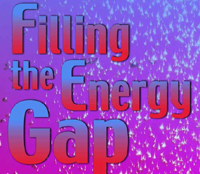energy efficiency
American West Windmill & Solar (Abernathy, TX) is the U.S. master distributor for the…
In September 2001, the late Mark Urban wrote passionately about the value of making watershapes as energy efficient and resource conscious as they could possibly be. Ten years later, his words are as insightful as they ever were: Everyone is concerned these days about electricity, gasoline and natural gas and all other forms of energy. What is amazing is that, despite this surge in interest, very few people have considered
Have you had just about enough of the current chatter about the environment? Have the terms “global warming,” “carbon footprint” and “sustainable landscape” become more irritating to you than they are inspiring? If so, all I can say is that I don’t think you’ll like the future. Indeed, for those of you who’ve spent the last little while waiting for the Green Revolution to fade away need to set aside any hope that it’s just a fad – just some trumped-up, pop-culture phenomenon that will go away as suddenly as it came to prominence. In fact, the green movement – or whatever you want to call it – is rapidly on its way to
It seems that everyone’s talking about “sustainability” these days, with the usual thought being that, as exterior designers, good environmental stewardship must be one of our main missions. But what is sustainability? What do watershapers need to do to encompass this philosophy? As important, what does it mean to our clients, and where are they in all of this? According the numerous sources I’ve consulted, sustainability is defined as striving for the best outcome for both human and natural environments, now and well into the future. In other words, it’s about
Recent times have seen the introduction to the pool/spa industry of a new breed of hydraulic pumps that use what is known as 'variable frequency drive' technology. Here, watershaper, hydraulics expert and Genesis 3 co-founder Skip Phillips describes why he believes these devices, which have been used successfully for years in other industries that demand hydraulic efficiency, represent the future for pools, spas and other watershapes. For all the progress made in recent years to change the nature of the game, to this day I still see situations in which pumps, filters and other system components for pools, spas and other watershapes have, hydraulically speaking, been completely
It's a tale of two visions. One contingent in the family wanted a formal, architectural pool that would reflect the geometry of the home. The other wanted to borrow the natural look of the lake and rock formations that flowed down the sloping backyard. Such divergent themes are generally difficult to blend into a coherent design, but I managed to do it with a little help from some friends. The project, which involves placing a formal, geometric pool atop a formation of artificial rock that looms over a grotto and lagoon-like pool below, is still under construction at this writing. At this point, I'd have to say that the results should be just as spectacular as the design process was arduous. My company is based in Raleigh, N.C., which, although it is hardly a backwater, is not exactly at the epicenter of watershape design or construction expertise. To integrate this diverse clutch of elements, I felt a need to
It's a tale of two visions. One contingent in the family wanted a formal, architectural pool that would reflect the geometry of the home. The other wanted to borrow the natural look of the lake and rock formations that flowed down the sloping backyard. Such divergent themes are generally difficult to blend into a coherent design, but I managed to do it with a little help from some friends. The project, which involves placing a formal, geometric pool atop a formation of artificial rock that looms over a grotto and lagoon-like pool below, is still under construction at this writing. At this point, I'd have to say that the results should be just as spectacular as the design process was arduous. My company is based in Raleigh, N.C., which, although it is hardly a backwater, is not exactly at the epicenter of watershape design or construction expertise. To integrate this diverse clutch of elements, I felt a need to
Everyone is concerned these days about electricity, gasoline and natural gas and all other forms of energy. What is amazing is that, despite this surge in interest, very few people have considered ways in which swimming pools can be built to reduce the energy required to heat them - and by substantial amounts. This dearth of energy consciousness has nothing to do with the manufacturers of heating equipment. It's fair to say that most heater manufacturers - whether they pursue combustion heating with fossil fuel, compression heating with heat pumps or passive heating with radiant solar, absorbent solar panels or solar covers - all have optimized their own products and made them remarkably energy-efficient. The same is true of recirculation systems: Pumps of all kinds are optimized to very high efficiencies, and the pool and spa industry has made positive improvements in acknowledging the necessities of hydraulic efficiency (although it's fair to say we



















